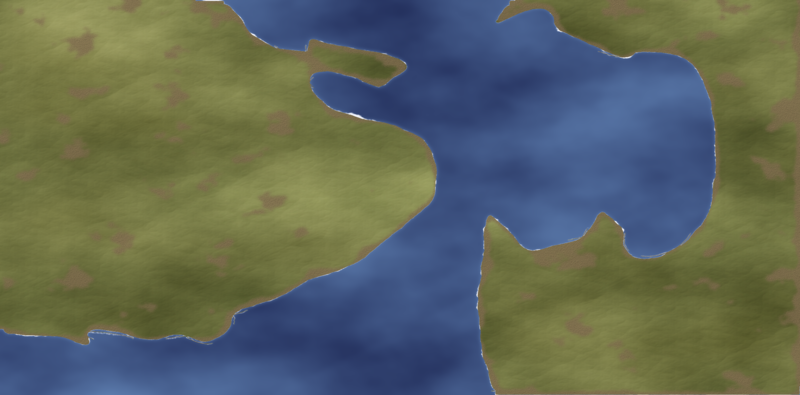Post 11:Let There be Mountains
The technique for making the mountains is very similar to that of making the land. Because we have an idea for a map, we will start in this case by sketching a blurred representation of where they should be. Otherwise, just use one of the random techniques:
Create a new layer “Mountains”. Fill in white for the general areas of the mountain ranges, and apply a 50 px (or so) Gaussian blur. It is helpful to keep the original sketch on top with reduced opacity to act as a guide. Don’t worry about going in to the sea, because we can we can erase those areas later:
Post11-1.png
Now the noise layer (I used detail 8 and size of

and set the blend mode to multiply. Then add a third layer (remember the TLS) as a clipping layer, and use the levels dialog to bring it down to show the mountains you want Here is the screen showing the three layers
Post11-2.png
Use the magic wand again to select the non-mountain area (like with the land) and create a new layer called “Mountains Mask” with a white on black. (Also the white colour selection as a new selection mask using
Select->Save to Channel).
Now we want to create a heightfield from this. The easiest way I have found to do this is to copy the current visible image (
Edit->Copy Visible) then paste it (CTRL-V) to a floating selection. Click the New Layer button to get it on its own layer rather than a floating layer. Now stretch the colour range out (
Color->Auto->Normalize):
Post11-3.png
Rename this layer to “mountain colour”. Make a duplicate and call it “mountain bump map”. Now set the foreground colour to “lowest dirt” and the background colour to “highest dirt”, and on the “mountain colour” layer, do a
Color->Map->Gradient Map.
Post11-4.png
Normalize the colours (
Colors->Auto->Normalize) and add a layer mask, using the mountain mask channel. (Note, the Dirt layer was turned of in this image by accident).
Post11-5.png









 and set the blend mode to multiply. Then add a third layer (remember the TLS) as a clipping layer, and use the levels dialog to bring it down to show the mountains you want Here is the screen showing the three layers
and set the blend mode to multiply. Then add a third layer (remember the TLS) as a clipping layer, and use the levels dialog to bring it down to show the mountains you want Here is the screen showing the three layers

 Reply With Quote
Reply With Quote